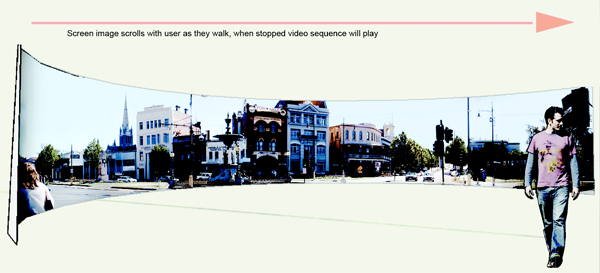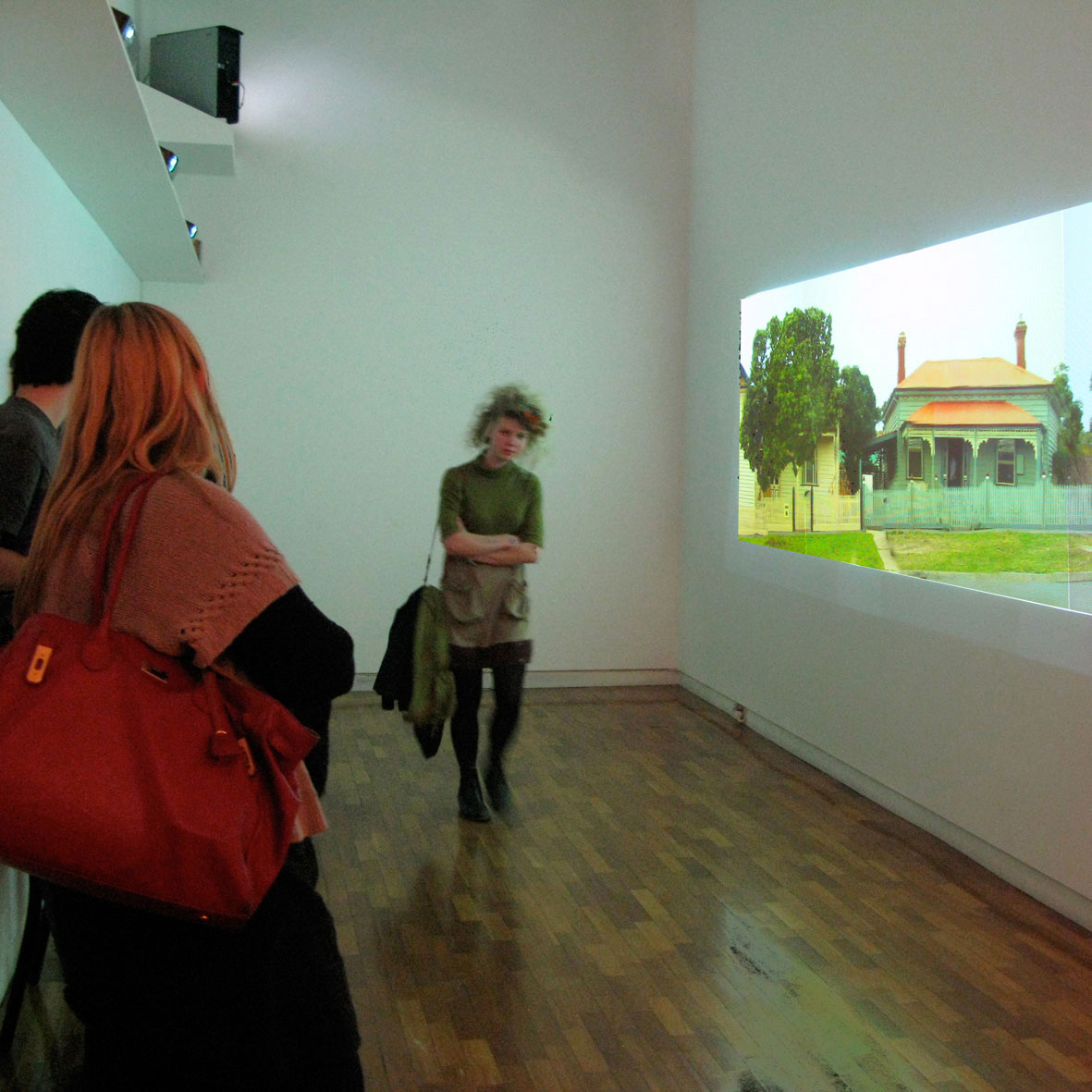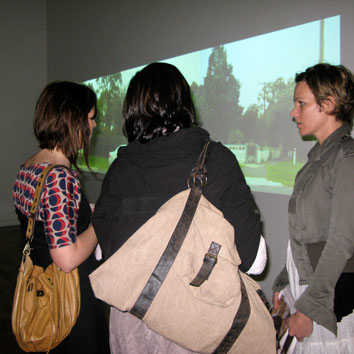Martin Rieser Artist and Writer The Street
|
The Street-an interactive video wall
The Street is a large panoramic
reactive screen projection. A poetic
docu-drama in genre, it formed part of the RMIT Heat : The Art of Climate Change Exhibition in Melbourne
The overall background ‘Street” image, (a typical city street in Bendigo, Victoria) remains still until a proximatesection is activated by an audience
member by approaching the video sensors.This project builds on the concept
behind my last few projects,
where audience motion has triggered
increasing degrees of intimacy
(Understanding Echo 2000 ) or moved
the sound track from one screen to
another (Triple Echo 2002) or tracked
the audience around a space, assigning
a video character to an individual
observer (Hosts 2006).
A seamless scrolling image of the street
is projected onto the wall of the space
synchronously with the motion of an
audience member, such that
the assigned house appears to lock on
to their particular member.The house in question will then appear to track the
user and move alongside them as they
walk. Once in this mode, any prolonged
pause in movement by the viewer halts
the image scrolling, and triggers short
video and sound narrative/ overlays
associated only with the assigned
house. These will be based on aspects
of the extractive history of Bendigo and
its effects on the ecology, both natural
and social, visualized through a spoken
poetic narrative and synchronous video
piece.
The installation was based on an
array of three seamlessly linked
projectors (Matrox board), using the
tracking of human presence through
sensor technology, developed by Ian Wilcox and Anthony Rowe. This was based on video motion sensing and interpretative software.
I aimed to create a series of these sound
and video scenes or vignetted visual
poems, based on my experiences of
the diverse communities of Bendigo
during a residency in 2007. They
related to aboriginal and ethnic Chinese
histories, to gold-mining and to the
drought and its effects on agriculture
through specific observed narratives.
Since these are fleetingly revealed
at different positions on the panoramic
screen, when triggered by the viewer’s
movement in the gallery space, they
allowed for both active and passive
modes of audience consumption. The
random allocation of a house to a
particular visitor enhanced both the
curiosity of the “active” viewer and an
observing “passive” audience by
encouraging them to explore the
associated narratives for each house.




